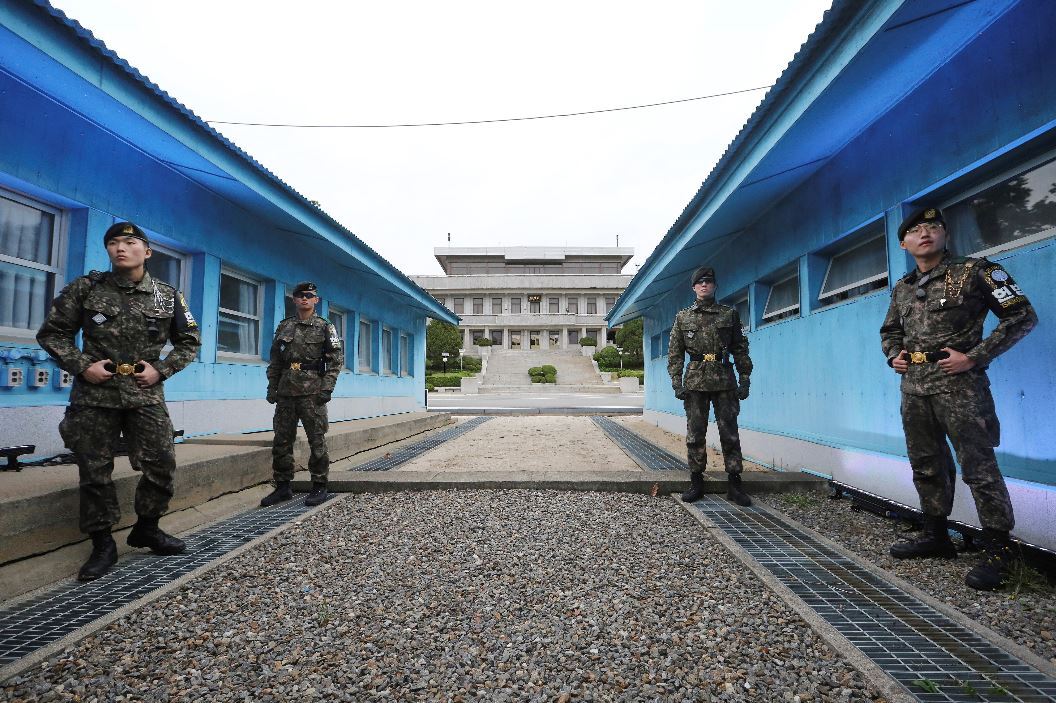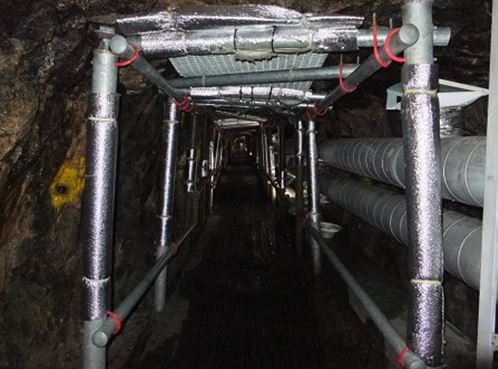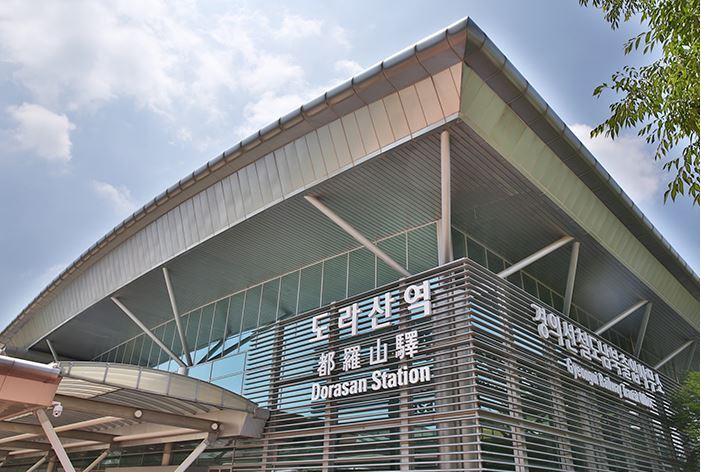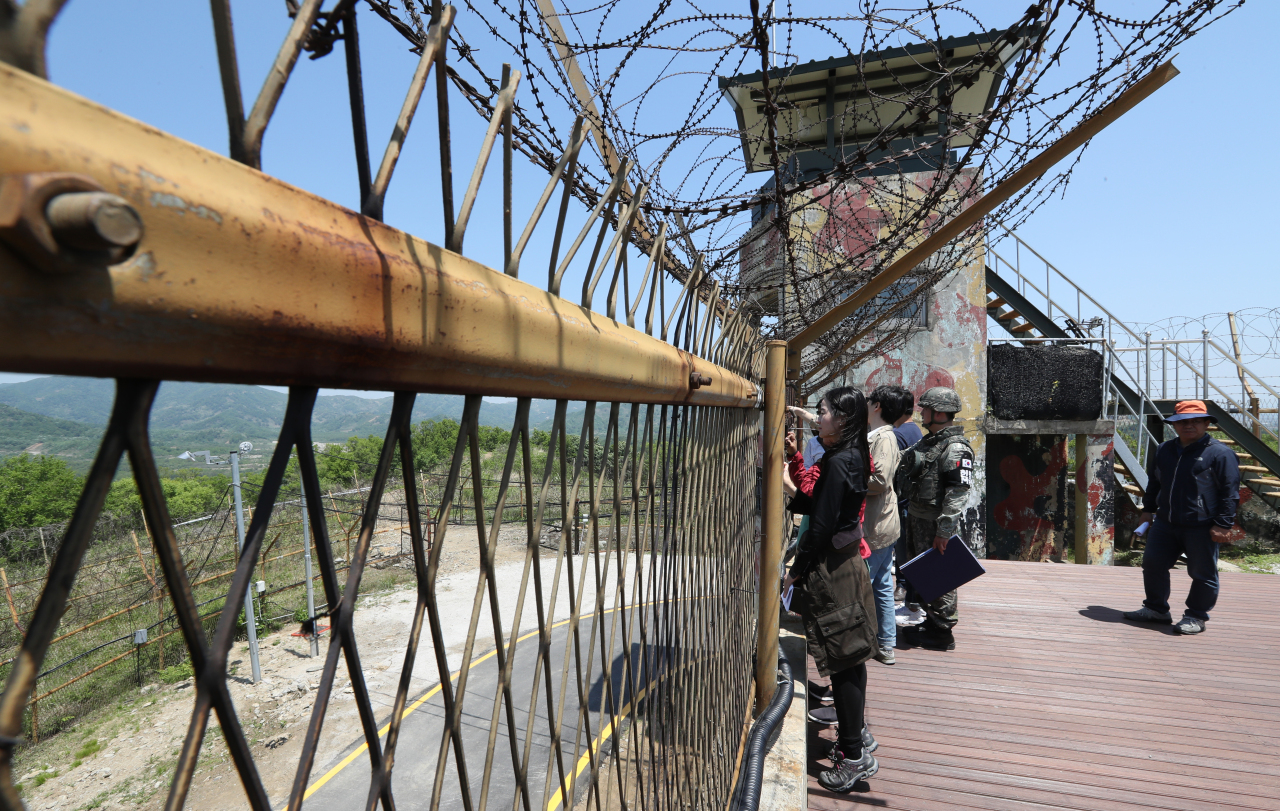[Weekender] Border-area tourism on the rise
DMZ sightseeing appeals to tourists with unique history, atmosphere
By Lee Sun-youngPublished : May 24, 2019 - 10:10
One of the last vestiges of the Cold War, the Demilitarized Zone is often described as the world’s most heavily fortified border. But it is also a tourist magnet, attracting 1.2 million visitors annually.
From the bustling metropolis of Seoul, tour buses take hundreds of foreign and local tourists to security-related tourism spots on a daily basis -- from Imjingak, a family-friendly theme park that serves as a starting point for border-area tourism, to the historic truce village of Panmunjom, where the armistice that ended the Korean War was signed in 1953.
From the bustling metropolis of Seoul, tour buses take hundreds of foreign and local tourists to security-related tourism spots on a daily basis -- from Imjingak, a family-friendly theme park that serves as a starting point for border-area tourism, to the historic truce village of Panmunjom, where the armistice that ended the Korean War was signed in 1953.

“Most foreign tourists are curious about the secretive North, although not all take action on that curiosity by signing up for a tour,” said Chung Yong-shik, a marketing manager at Seoul-based travel agency Cosmojin, which specializes in border-area tourism for foreign tourists.
The company takes 60 to 70 tourists on its DMZ day tour daily, from Tuesday through Sunday. For an extra fee, a North Korean defector comes along to fill the gap in the tour guide’s knowledge about the communist regime and satisfy participants’ curiosity.

“The DMZ tour has a quiet and peaceful vibe to it. It is more of a learning experience on the history and background of Korean conflicts and tensions, whereas a visit to Panmunjom is a more intense experience allowing visitors to get the closest possible to North Korea, facing their soldiers up close,” Chung said.
A bunch of tour agencies offer group tours or private tours of the DMZ and Panmunjom. There is also a train tour package offered by the state-run Korea Railroad Corp. Major attractions include infiltration tunnels, purportedly built by the North for the purpose of an underground invasion; observatories, where visitors can peer through binoculars into the reclusive communist state; and war-time monuments.
There is a growing interest in tourism at the border area, industry insiders say.
Paju, a city in Gyeonggi Province just south of the DMZ, has reported a 170 percent increase in visitors to security-related tourism spots so far this year. In a press release, the municipal government spoke of growing interest among Chinese visitors as a hopeful sign going forward.

On a national level, South Korea is looking anew at its decades-old military confrontation with the North. In the era of “themed travel,” the country has a unique theme to offer as the Cold War’s last front.
President Moon Jae-in aptly summarized the concept at a national tourism strategy meeting in April, “Korea, the only divided country in the world, with the wreckage of the Cold War, can paradoxically rise with tourism related to peace.”
Peace tourism is not just about the money. It comes from a bigger picture of peace on the Korean Peninsula.
Moon and his North Korean counterpart, Kim Jong-un, have agreed to turn the DMZ into a peace zone, easing border tensions during their summit in April last year.

As part of the initiative, Panmunjom underwent a months-long disarmament process and started letting civilian visits again from May 1.
“What you’ll see is a different vibe. What once was full of tensions is now a vibe of peace. We’ve taken away the land mines. We’ve taken the weapons out of the towers. Our guards no longer carry weapons,” Lt. Col. Sean Morrow, commander of the United Nations Command Security Battalion, told reporters upon its reopening.
Another project is the DMZ Peace Trails, three hiking routes leading to DMZ areas in Goseong, Cheorwon and Paju, which had remained off limits to civilians since the war.
The route in the Goseong area is currently open and applications are being received online. The Cheorwon route is set to open June 1. The Paju part will be opened at a later date after the approval of the United Nations Command.
People wanting to walk along the Goseong or Cheorwon trails can apply through the DMZ’s integrated information system website (www.dmz.go.kr/english), run by the Ministry of the Interior and Safety, or Durunubi (www.durunubi.kr), an online guide to hiking in the country by the Korea Tourism Organization.
For DMZ tours, a number of tour agencies have similar half-day or full-day packages on a daily basis. Reservations should be made at least three days in advance. Foreign tourists must have a valid passport to enter the Civilian Control Zone.
For a Panmunjom tour, check for availability in advance and beware of a possible last-minute cancellation for security reasons.
By Lee Sun-young (milaya@heraldcorp.com)







![[KH Explains] How should Korea adjust its trade defenses against Chinese EVs?](http://res.heraldm.com/phpwas/restmb_idxmake.php?idx=644&simg=/content/image/2024/04/15/20240415050562_0.jpg&u=20240415144419)











![[Today’s K-pop] Stray Kids to return soon: report](http://res.heraldm.com/phpwas/restmb_idxmake.php?idx=642&simg=/content/image/2024/04/16/20240416050713_0.jpg&u=)